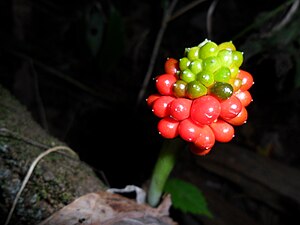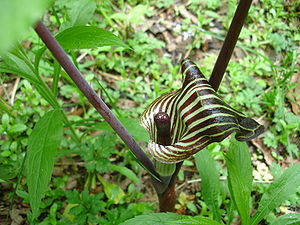
Black is Beautiful
For my updated post on black flowers, check out Black Goes With Everything.
There has been an explosion of black flowers and foliage in the past couple of years in the gardening world. It started out as a trickle and now is a tsunami of everything black! When I go to the nursery and look at new cultivars of annuals, perennials, and shrubs, all shades of black predominates.
But you have to know how to use black for the best effect. I like to place black flowers or foliage next to very bright intense colors, such as hot pink or lime green to get the biggest impact. The black color gives the eye a rest when you pair it with bright vibrant colors. If you place black plants next to darker hued plants, it just doesn’t work and the black color fades in the background. So use black carefully and site it with some thought.

Black plants can also echo other plants that have black stems, black venation or black undertones. I find that if you have a boring or blah border, black instantaneously ramps up the visual interest. It can become a focal point if you have a particularly beautiful black plant. I like this Alternanthera ‘Black Night’ in a container with large glossy leaves that echoes the black spiller which is a trailing Alternanthera.

There are all different hues and variations on black and sometimes the amount of sunlight a plant receives will affect the coloration. Also, juvenile foliage will generally be a darker, more intense, shade. In the plant trade describing many of the black plants, you hear adjectives such as chocolate, deep burgundy, midnight, or coffee.

Jack in the Pulpits

The Japanese Cobra Lily, Arisaema sikokanum, is an elegant cousin to our native Jack in the Pulpit. The spadix is a pure marshmallow white which gives the flower such great contrast. It looks like a flower all decked out in black tie ready for a party! Tres chic! And the scarlet berries make this expensive plant worth the money.


In feng shui, which is used frequently in landscape design, black is the color of mystery and sophistication. Black is the negation of color but next to any other color, it will make the color black stand out.

Petunias
I love the new black petunias! The colors are novel and I tried them for the first time last year. The profusion of flowers faded by the end of the summer and I am watching to see if they do any better this year. Even if they don’t perform as well as other petunias, I will probably continue to grow them because of the wow factor. I think the black petunias are closest to the true black color.

Elderberry
Black Lace Elderberry, Sambucas nigra, is one of those plants that you can grow not only for the feathery graceful foliage, but also the near black coloration. The foliage is similar to a cut leaf maple but with dark hues for added drama. To complete the picture, umbels of pink-hued flowers appear in the summer followed by berries snatched up by wildlife. Elderberry is a cut-back shrub, like a butterfly bush, and will grow at least 6 feet during the growing season.

Cannas

For instant drama, in a perennial border, pop in the dark, dark Cannas like Canna ‘Australia’, with a midnight burgundy coloration that holds up all summer long. Topping off the plant at around 5 to 6 feet high are shocking fire engine red flowers that hummingbirds will visit frequently.

Containers
The same benefits of using black plants in your borders hold true for containers. Use them with contrasting colors to let the other colors pop.



Sweet Potato Vine
I am sure everyone who does containers is familiar with the Sweet Potato Vine. This annual trailing vine up to 15 feet long is becoming ubiquitous in containers. I like to pop it into the garden to twine around shrubs and perennials. It is especially effective in newly planted gardens with lots of blank spaces to fill. The vine grows quickly – sometimes too quickly! – and then dies with the first frost. Then you can dig up the huge sweet potato that forms underground and save it to plant for next year. This black Sweet Potato Vine is called ‘Illusion Midnight Lace’. There is another one called ‘Ace of Spades’.


Succulents
Black has reached the plant world in every plant group and succulents are really big now so why not black succulents? I love them, but they can be quite prickly and hard to work with.


Heucheras
No discussion of black plants is complete without mentioning Heucheras or Coral Bells. There must be thousands of varieties of these by now – the plant hybridizers are going crazy with them! I like the black one called ‘Frosted Violet’. This one has dark black venation that makes the leaves stand out. ‘Black Out’ is another Heuchera that I am dying to try. There are too many Heucheras and not enough time.




Reblogged this on Potted Plant Society.